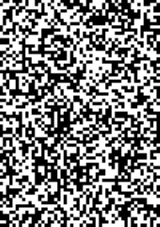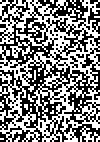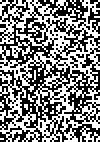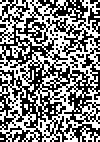
Random dot stereogram
Encyclopedia
Random Dot Stereograms are pairs of images of random dots which when viewed with the aid of a stereoscope
, or with the eyes focused on a point behind the images, produce a sensation of depth, with objects appearing to be in front of or behind the actual images.
The Random Dot Stereogram (RDS) technique, already known since 1919, was much used by Dr. Béla Julesz
and it, along with additional research, lead to publication of an influential book detailing his theories and work on the basis of human stereo vision
entitled Foundations of Cyclopean Perception
.
Later concepts, involving single images, not necessarily consisting of random dots, and more well known to the general public, are known as Autostereogram
s.
to the United States
following the 1956 Soviet invasion. After his arrival, he found himself working at Bell Labs
, alongside many other great names in mathematics. One of his projects involved detecting patterns in the output of random number generators. Dr. Julesz decided to try mapping the numbers into images and using the pattern-detecting capabilities of the human brain to look for a lack of randomness.
In 1840, Sir Charles Wheatstone developed the stereoscope
. Using the stereoscope, two photographs, taken a small horizontal distance apart, could be viewed with the objects in the scene appearing to be 3-dimensional. Over 100 years later, Dr. Julesz noticed that two identical random images similar to what he had produced in his previously mentioned project, when viewed through a stereoscope, appeared as if they were projected onto a uniform flat surface. He experimented with the image pair by shifting a square in the center of one of the images by a small amount. When this pair was viewed through the stereoscope, however, the square appeared to rise out from the page.
and the study of perception
.
The random dot stereogram provided insight on how stereo vision
is processed by the human brain. According to Ralph Siegel, Dr. Julesz had "unambiguously demonstrated that stereoscopic depth could be computed in the absence of any identifiable objects, in the absence of any perspective, in the absence of any cues available to either eye alone."
Dr. Julesz termed this 'cyclopean perception' based on his theory that the brain forms a single-image mental model of a scene, as a Cyclops
would, but with depth information added, despite receiving two disparate images from the eyes. His theories and work are detailed in his 1971 book.
and Maureen Clarke led to encoding the same data into a single image which did not require a stereoscope for viewing. These are known as Single Image Random Dot Stereograms (SIRDS), or Random Dot Autostereogram
s.
Replacing the random dot base pattern with an image or texture gives the form that made the Single Image Stereogram known to the general public, through the Magic Eye
series of books.
1. Create an image of suitable size. Fill it with random dots. Duplicate the image.


2. Select a region in one image.


3. Shift this region horizontally by a small amount. The stereogram is complete.


To view the stereogram, focus on a point behind the image by a small amount until the two images "snap" together.
Note that viewing the identical images from step 2 in this manner will work, but the whole area will appear at the same depth. The shifted region produces the binocular disparity
necessary to give a sensation of depth. Different shifts correspond to different depths.
Another way to view it is to focus on a point in front of the images i.e. make "cross eyes" and force the images to snap together having your left eye focused on the right image and your right eye focused on the left image.
Stereoscopy
Stereoscopy refers to a technique for creating or enhancing the illusion of depth in an image by presenting two offset images separately to the left and right eye of the viewer. Both of these 2-D offset images are then combined in the brain to give the perception of 3-D depth...
, or with the eyes focused on a point behind the images, produce a sensation of depth, with objects appearing to be in front of or behind the actual images.
The Random Dot Stereogram (RDS) technique, already known since 1919, was much used by Dr. Béla Julesz
Béla Julesz
Béla Julesz was a visual neuroscientist and experimental psychologist in the fields of visual and auditory perception.Julesz was the originator of random dot stereograms which led to the creation of autostereograms...
and it, along with additional research, lead to publication of an influential book detailing his theories and work on the basis of human stereo vision
Stereopsis
Stereopsis refers to impression of depth that is perceived when a scene is viewed with both eyes by someone with normal binocular vision. Binocular viewing of a scene creates two slightly different images of the scene in the two eyes due the the eyes' different positions on the head...
entitled Foundations of Cyclopean Perception
Foundations of Cyclopean Perception
Foundations of Cyclopean Perception is a book by Bela Julesz, published in 1971....
.
Later concepts, involving single images, not necessarily consisting of random dots, and more well known to the general public, are known as Autostereogram
Autostereogram
An autostereogram is a single-image stereogram , designed to create the visual illusion of a three-dimensional scene from a two-dimensional image in the human brain...
s.
Development
Dr. Julesz emigrated from HungaryHungary
Hungary , officially the Republic of Hungary , is a landlocked country in Central Europe. It is situated in the Carpathian Basin and is bordered by Slovakia to the north, Ukraine and Romania to the east, Serbia and Croatia to the south, Slovenia to the southwest and Austria to the west. The...
to the United States
United States
The United States of America is a federal constitutional republic comprising fifty states and a federal district...
following the 1956 Soviet invasion. After his arrival, he found himself working at Bell Labs
Bell Labs
Bell Laboratories is the research and development subsidiary of the French-owned Alcatel-Lucent and previously of the American Telephone & Telegraph Company , half-owned through its Western Electric manufacturing subsidiary.Bell Laboratories operates its...
, alongside many other great names in mathematics. One of his projects involved detecting patterns in the output of random number generators. Dr. Julesz decided to try mapping the numbers into images and using the pattern-detecting capabilities of the human brain to look for a lack of randomness.
In 1840, Sir Charles Wheatstone developed the stereoscope
Stereoscopy
Stereoscopy refers to a technique for creating or enhancing the illusion of depth in an image by presenting two offset images separately to the left and right eye of the viewer. Both of these 2-D offset images are then combined in the brain to give the perception of 3-D depth...
. Using the stereoscope, two photographs, taken a small horizontal distance apart, could be viewed with the objects in the scene appearing to be 3-dimensional. Over 100 years later, Dr. Julesz noticed that two identical random images similar to what he had produced in his previously mentioned project, when viewed through a stereoscope, appeared as if they were projected onto a uniform flat surface. He experimented with the image pair by shifting a square in the center of one of the images by a small amount. When this pair was viewed through the stereoscope, however, the square appeared to rise out from the page.
Implications
Though interesting on its own as a technique for producing sensations of depth in printed images, the discovery also had implications in cognitive scienceCognitive science
Cognitive science is the interdisciplinary scientific study of mind and its processes. It examines what cognition is, what it does and how it works. It includes research on how information is processed , represented, and transformed in behaviour, nervous system or machine...
and the study of perception
Perception
Perception is the process of attaining awareness or understanding of the environment by organizing and interpreting sensory information. All perception involves signals in the nervous system, which in turn result from physical stimulation of the sense organs...
.
The random dot stereogram provided insight on how stereo vision
Stereopsis
Stereopsis refers to impression of depth that is perceived when a scene is viewed with both eyes by someone with normal binocular vision. Binocular viewing of a scene creates two slightly different images of the scene in the two eyes due the the eyes' different positions on the head...
is processed by the human brain. According to Ralph Siegel, Dr. Julesz had "unambiguously demonstrated that stereoscopic depth could be computed in the absence of any identifiable objects, in the absence of any perspective, in the absence of any cues available to either eye alone."
Dr. Julesz termed this 'cyclopean perception' based on his theory that the brain forms a single-image mental model of a scene, as a Cyclops
Cyclops
A cyclops , in Greek mythology and later Roman mythology, was a member of a primordial race of giants, each with a single eye in the middle of his forehead...
would, but with depth information added, despite receiving two disparate images from the eyes. His theories and work are detailed in his 1971 book.
Further development
The name 'random dot stereogram' specifically refers to pairs of images based on random dots. Additional work by Christopher TylerChristopher Tyler
Christopher W. Tyler is a visual psychophysicist, creator of the autostereogram and is the Head of the Smith-Kettlewell Brain Imaging Center.-Biography:Shortly after earning his PhD at the University of Keele , Dr...
and Maureen Clarke led to encoding the same data into a single image which did not require a stereoscope for viewing. These are known as Single Image Random Dot Stereograms (SIRDS), or Random Dot Autostereogram
Autostereogram
An autostereogram is a single-image stereogram , designed to create the visual illusion of a three-dimensional scene from a two-dimensional image in the human brain...
s.
Replacing the random dot base pattern with an image or texture gives the form that made the Single Image Stereogram known to the general public, through the Magic Eye
Magic Eye
Magic Eye is a series of books published by N.E. Thing Enterprises . The books feature autostereograms , which allow people to see 3D images by focusing on 2D patterns. The viewer must diverge his or her eyes in order to see a hidden three-dimensional image within the pattern...
series of books.
Illustrated example
The process used to develop the first Random Dot Stereogram is illustrated below.1. Create an image of suitable size. Fill it with random dots. Duplicate the image.


2. Select a region in one image.


3. Shift this region horizontally by a small amount. The stereogram is complete.


To view the stereogram, focus on a point behind the image by a small amount until the two images "snap" together.
Note that viewing the identical images from step 2 in this manner will work, but the whole area will appear at the same depth. The shifted region produces the binocular disparity
Binocular disparity
Binocular disparity refers to the difference in image location of an object seen by the left and right eyes, resulting from the eyes' horizontal separation. The brain uses binocular disparity to extract depth information from the two-dimensional retinal images in stereopsis...
necessary to give a sensation of depth. Different shifts correspond to different depths.
Another way to view it is to focus on a point in front of the images i.e. make "cross eyes" and force the images to snap together having your left eye focused on the right image and your right eye focused on the left image.

